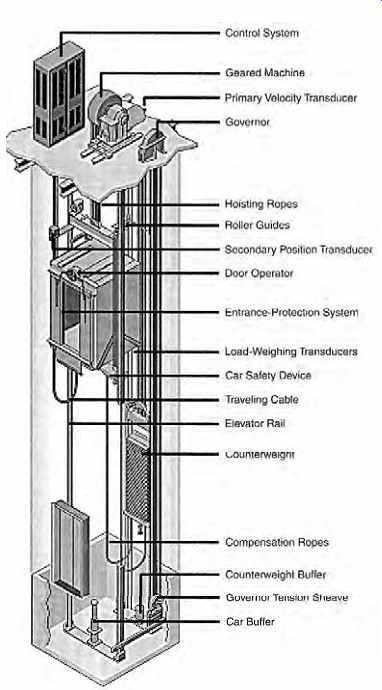AMAZON multi-meters discounts AMAZON oscilloscope discounts

No systems in a multistory structure are taken for granted more consistently
than elevators and escalators, which are relied upon to move people quickly
and safely under all conditions, including emergencies. This movement should
be rapid, trouble-free, and economical.
Furthermore, because vertical transportation accounts for 10% to 15% of the construction budget in tall buildings, somewhat less of the building area, and somewhat more of the operating cost-and is a determining factor in building shape, core layout, and lobby design- elevator and escalator selection and design integration are major tasks for the architectural designer.
Section 31 introduces the subject with a description of components including traction equipment, cars, safety devices, and systems of control and supervision. Fundamental topics, such as codes and standards and requirements for the disabled, are also covered. Criteria are established for elevator performance, and extensive car performance data are presented that can be used in conjunction with design criteria to select the size, number, and speed of elevators to meet design intent and criteria. Principles of elevator zoning are presented. The Section continues with an analysis of spatial requirements for elevators, including shafts, lobbies, and core arrangements, and concludes with special considerations such as energy use, safety, security, and noise.
Section 32 addresses special-case elevators: freight elevators, nonvertical designs, residential elevators, and chair lifts, with a discussion of equipment, capacities, selection, economy, and comparison (where applicable) to conventional design. The Section also covers interesting design options including double-deck cars and observation cars. Section 32 also describes material-handling devices: dumbwaiters, horizontal and vertical conveyors, pneumatic systems, container delivery systems, and automated self-propelled vehicles. This information responds to the need to plan for material handling in commercial and institutional buildings, rather than treating the subject as an afterthought, with resultant inefficiency, overloading of freight facilities, and misappropriation of passenger elevators.
Section 33 explains escalator system components, capacities, sizes, speeds, and methods of selection, followed by special topics including lighting, fire protection, power/energy requirements, and budget estimating.
Information on inclined walks and ramps is also presented.
Vertical Transportation: Passenger Elevators (part 1, part 2, part 3)
Coming soon:
Vertical Transportation (other topics)
Moving Stairways and Walks
Prev. | Next
Home Similar
articles top
of page